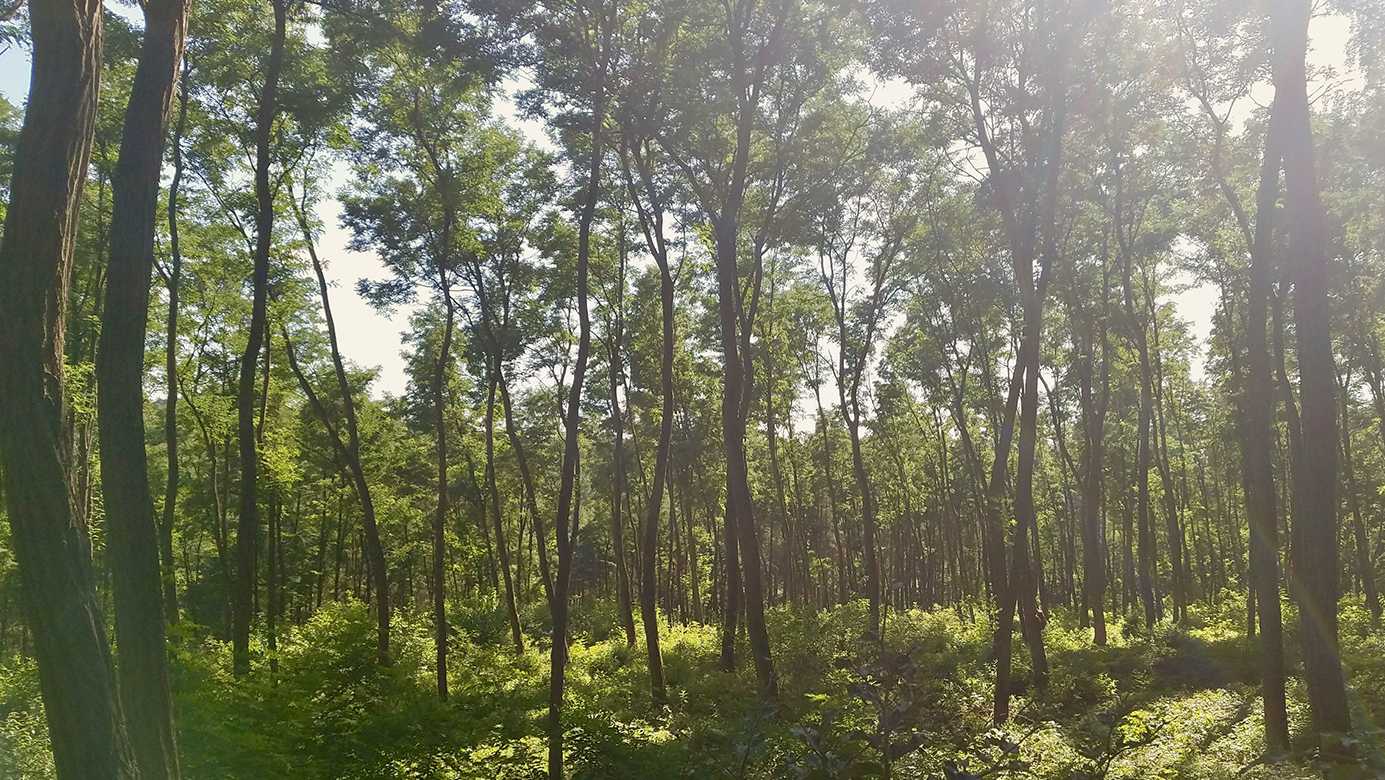Mid-latitude trees keep out the heat during hot summers
- D-USYS
- Institut für Atmosphäre und Klima
Researchers from ETH Zurich have shown that clearing forests has made hot days in mid-latitudes even hotter. Over the most deforested regions of North America, deforestation contributed 1°C to the local annual maximum daytime temperature.

Over the last two centuries, massive industrialisation, population growth, and development of large-scale farming has transformed civilisation within modern developed countries, and with that also their landscapes. Take the extensive deforestation that occurred in North America and the former Eastern Bloc as an example. Climate scientists have suspected for some years that this deforestation has altered the intensity of heatwaves on a regional scale, but have not reached a consensus on whether it amplified or weakened them.
Up to 1°C increase in temperature
In the past, large uncertainties and contradictory models often prevented climate scientists from reaching clear conclusions about how the changes in these mechanisms through deforestation have impacted climate and extreme events. To tackle this problem, a study conducted by Quentin Lejeune, Edouard Davin, Sonia Seneviratne and Lukas Gudmundsson at ETH Zurich, together with a colleague from MPI Hamburg revisited the issue by combining present-day observations along with a set of climate models. Their study was recently published in Nature Climate Change. The results indicate that over the mid-latitudes, hot days have become even hotter because of deforestation. Best estimates show that over the most deforested regions of North America, deforestation contributed 1°C to the local annual maximum daytime temperature.
Opposing mechanisms
When forests get replaced by agricultural crops or grasslands, this affects how energy and water exchange between the land’s surface and the atmosphere, with consequences for the local climate at their interface. Several mechanisms come into play however, sometimes having counteractive effects. On the one hand, lighter crops and grasses reflect more solar energy than trees, thereby having a tendency to cool the earth’s surface. On the other hand, these plants are shorter and offer less resistance to the wind, leading to less turbulent eddies over the land’s surface and are therefore worse at dissipating the heat into the atmosphere.
Contradictory effects of plant transpiration
Another phenomenon to be considered is plant transpiration. During transpiration, some of the solar energy received by plants is used to turn water pumped in the soil into vapour, which is then released in the air. Through this process, plants cool their environment by preventing the transformation of this energy into heat. However, the amount of energy used for transpiration strongly depends on the species and on the time of the year. Crops may transpire more than trees during their growing season, but the latter have better access to soil water through their deeper roots, which can become critical during dry summers in mid-latitudes.
Consequences for the local climate
Replanting forests to sequester carbon is being considered as a policy option in the fight against climate change. These new results indicate that reforestation in these mid-latitude regions would bring a co-benefit by alleviating the adverse impacts of heatwaves.
Many considerations come into play when it comes to land-use decisions, for instance ensuring food security or protecting biodiversity. Evidence grows, however, that even a few tenths of a degree during heatwaves can make a difference in terms of climate impacts on agriculture or ecosystems. Therefore, decision-makers involved in land-use planning should consider to make use of all the natural benefits brought by forests.
References
- Lejeune Q et al. Historical deforestation locally increased the intensity of hot days in northern mid-latitude. 2018.
external pagehttps://doi.org/10.1038/s41558-018-0131-zcall_made - external pageDeforestation intensifies hot days:call_made Article on Nature climate change by Paul C. Stoy
- external pageTrees might cool things down more than scientists thoughtcall_made: Climate Wire, 24 April, 2018
- external pageDeforestation has driven up hottest day temperatures, study sayscall_made: Carbon Brief, 23 April, 2018
- Reflective surfaces alleviate heatwaves: ETH News from 29 Jan, 2018
